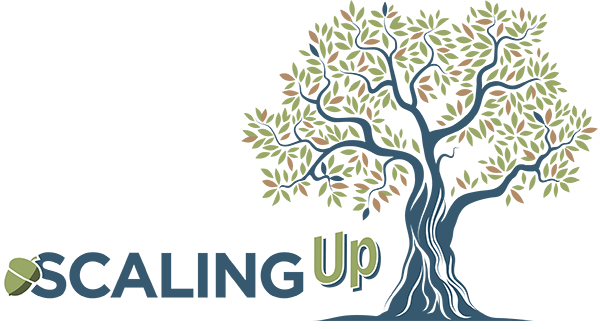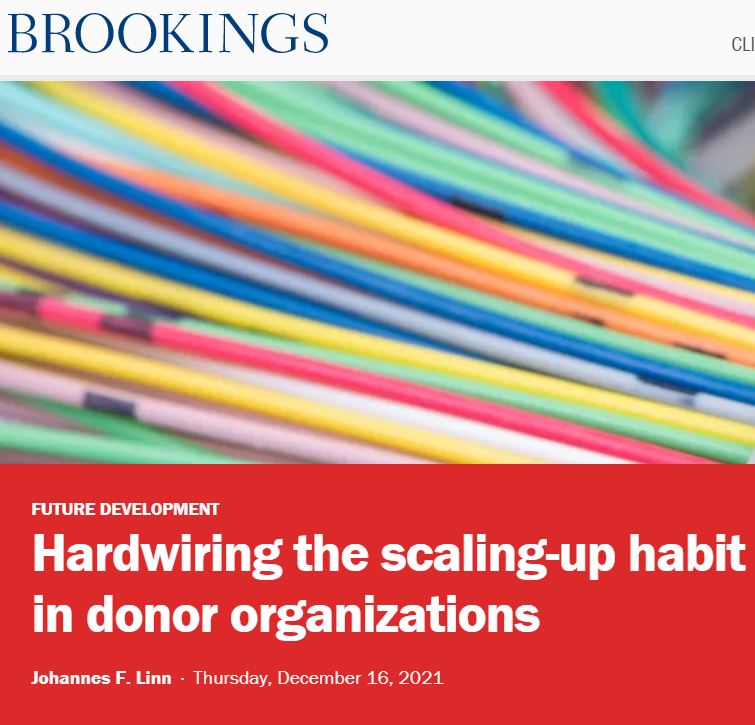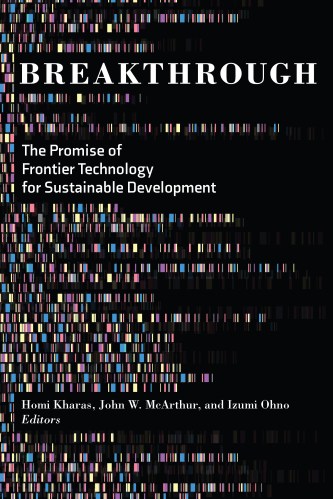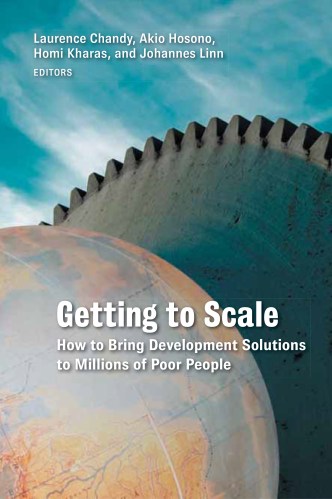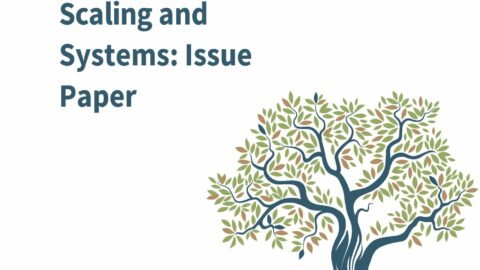Reposted from Hardwiring the scaling-up habit in donor organizations, 12/16/2021, https://www.brookings.edu/articles/hardwiring-the-scaling-up-habit-in-donor-organizations/
Editor’s note:This blog is based on a presentation on mainstreaming scaling in donor organizations at the Workshop of the Community of Practice, November 2021.
If the international community is to meet global development and climate challenges, in particular the Sustainable Development Goals (SDGs) and the Paris Agreement climate targets, everyone involved must ask themselves how their innovations, projects, or activities can identify successful interventions and scale them up. Over the last 15 years, teams at Brookings have tried to figure this out by taking stock of what we know from literature and practice, by exploring how to bring development solutions to millions of poor people, by looking at scaling opportunities in agriculture, education, and climate change and, most recently, by studying how breakthrough innovations can help achieve critical development outcomes at scale.
We also looked at whether and how development finance agencies—multilateral, bilateral, foundations, and international NGOs—scale up systematically by hardwiring these good habits into their funding and operational approaches. We found that traditional development finance focused on time-bound, one-off projects to deliver limited results. When these results were achieved, the projects were rated “successful” in ex-post evaluations. Scalability and scaling after a project ends have not featured as a criterion for successful project delivery in project design, implementation, or evaluation. As a result, too many development projects have been “pilots to nowhere,” so their benefits end up being limited in size and duration.
Donor organizations can help recipients to scale in many ways, not only as funders, but also as champions, capacity builders, intermediaries, and coordinators. And demonstrating impact at scale can help donors convince the public, parliaments, and politicians that they deserve to be funded from scarce taxpayer resources. At the same time, one-off donor projects that do not scale tend to reinforce the focus on short-term impact among local partners, whether in the public or the private sectors. So, an effective, systematic approach to scaling by donor organizations is critical.
5 stages
How should one go about changing prevailing donor practice? A first step is to realistically appraise the status of scaling in a donor organization. To do so, a range of options can be considered.

Going from left to right, we can distinguish five types of integration of scaling into an organization:
- The scaling agenda is pursued outside the organization by funders, consulting outfits, think tanks, researchers, or advisers trying to support and influence the organization in mainstreaming scaling.
- Scaling is the focus of a separate unit at the periphery of the organization, but not integrated into operations of the “mother ship”; this is typical for innovation and accelerator labs introduced by many development finance organizations in recent years (e.g., DFID, UNDP, WFP).
- Scaling is pursued somewhere in the organization by one or more individuals or units, but not all; this appears to be the case now in such organizations as the World Bank and USAID.
- The scaling agenda is at the center of the organization, i.e., it is owned by the organization’s leadership and is part of its mission and strategy but is not fully integrated into operational practices. The CGIAR (the Consultative Group of International Agricultural Research) and the GCF (Green Climate Fund) recently put scaling at the center of their strategies; they are still in the process of mainstreaming it throughout the organization.
- Finally, scaling is intrinsic to the organization or fully mainstreamed, with scaling systematically pursued in operational practice throughout the organization; examples where this has been achieved include some of the specialized funding institutions (“vertical funds”), such as The Global Fund and the newly established Systematic Observations Financing Facility (SOFF), and some of the smaller foundations, e.g., the Eleanor Crook Foundation.
Typically, there’s been a concentration of organizations in the left three circles, with a few outliers to the right. Over recent years, there has been some progress from left to right, but there are still few cases of full mainstreaming.
6 steps to scale
In attempting to move an organization from left to right in the graph above one needs to develop a systematic approach to mainstreaming scaling consisting of six steps:
- Create a shared vision, e.g., as part of a mission statement; this is an important first step but by itself not nearly enough.
- Develop a systematic approach to scaling that is appropriate for the organization and its mission, by assessing and adapting current organizational practices in five areas: (a) vision and strategy; (b) operational business models and instruments; (c) internal policies, guidelines, and management processes; (d) staff and management; and (e) monitoring and evaluation. In the process one must adapt the standard one-off project model to incorporate a systematic focus on sustainable scaling beyond project end.
- Strengthen enablers for mainstreaming (leadership from the top, champions, managerial and staff incentives, partnerships, etc.).
- Reduce barriers (bureaucratic inertia, staff overload with “new fads and buzz words,” budget constraints on staff training, etc.).
- Take appropriate action and follow through.
- Monitor and evaluate progress with mainstreaming.
Like all change management and scaling efforts, mainstreaming scaling into an organization takes time and persistence and faces risks of discontinuity (especially with changes in leadership).
The International Fund for Agriculture and Development (IFAD) followed this approach with the assistance of a team of experts from the Brookings Institution and other external advisers over the last 10 years. An independent evaluation showed that much had been achieved, but that additional efforts were required for full mainstreaming. IFAD is now updating its scaling strategy.
In pressing forward with mainstreaming scaling in a donor organization one has to expect pushback from those interested in maintaining the status quo. Typical objections include these:
- We’re big and already doing it (for large organizations).
- We’re too small (for small organizations).
- It’s yet another fad best ignored.
- My management/board/authorizing environment only care about project impact, not about longer-term impact at scale.
- We don’t have the budget; our front-line is already overloaded.
- Your methods/operational guidance are too generic (or complex and burdensome).
- We can’t (be bothered to) keep track of whether the scaling approaches are implemented and working as intended.
10 lessons
From my work with some 15 international development agencies and funds, I’ve learned the following lessons:
- Focus on changing the mindsets of managers and staff by showing them that a systematic approach to scaling will help them achieve shared development objectives (e.g., SDGs) more effectively.
- Remember that scaling is about development impact, not necessarily about more money or bigger organizational footprint.
- Develop an approach that responds to the specific needs of the organization (with own managers/staff in the lead, not outsiders).
- Focus on integrating scaling into the project cycle, with a special focus on what happens beyond project end.
- Provide practical guidance and training to staff (and consultants).
- Keep bureaucratic processes as simple as possible.
- Allow more risk taking, recognizing that lack of success in projects is an opportunity to learn, rather than a failure.
- Link up with clients, partners, and funders in pursuing the mainstreaming agenda.
- Monitor and evaluate the mainstreaming process.
- Stick with it! The mainstreaming process takes years to complete.
